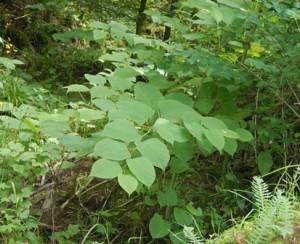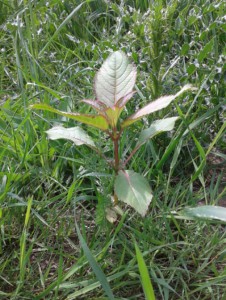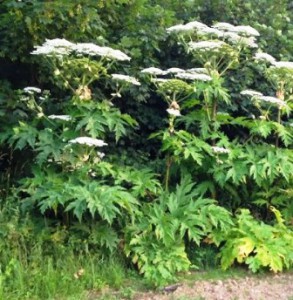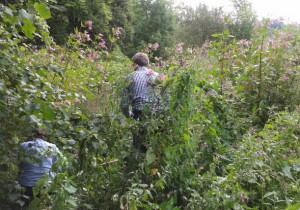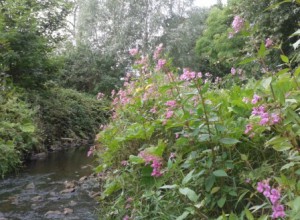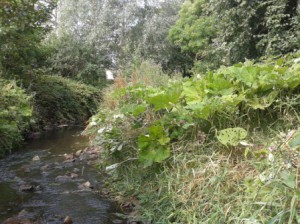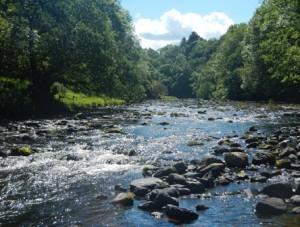
With the arrival of summer, fieldwork is now officially underway and the last couple of months have been busy with CRF.
From electrofishing to invasive non-native plant surveys, visiting rivers across the catchment has provided me with some valuable real-life examples into the issues challenging our rivers………..as well as developing the skill of walking on slippery boulders, bedrock or anything else that happens to be underfoot and good at challenging your balance whilst wading about in rivers!!
At the end of May, a training course in invasive non-native species (INNS) provided a useful refresher in the identification of INNS plants before I headed out with the CRF team to track down some plants. The three invasive plant species of particular interest in the Clyde catchment are Japanese knotweed, Himalayan balsam and Giant hogweed – plants with characteristics that lend themselves to spreading along rivers with ease! They are well established in various parts of the Clyde catchment and it wasn’t too long before we found some. Nevertheless, establishing the extent of these plants is the crucial first step to addressing their removal and control.
The main issues these particular species cause along our watercourses are: out-competing native plants; increased bank erosion (because the banks are left bare in autumn/winter); increased sedimentation in the river from eroded banks; and distraction of pollinators from native plants.
Every record counts, so if you’re reading this and have seen some INNS please do report your sightings using PlantTracker!
Fortunately, Himalayan balsam can be controlled relatively easily with pulling plants being the most effective method of control. I joined various volunteers during the month of July to remove balsam from rivers in the Avon valley and, although there’s some way to go yet, the practical sessions were a great starting point for reducing the amount of Himalayan balsam in the Clyde catchment. Our hard work prevented tens of thousands of seeds (each plants has ~800 seeds) spreading across the Clyde catchment and also increased the awareness of the issues Himalayan balsam plants cause along our rivers and provided volunteers with the skills and know-how for dealing with this plant in the future. The sessions even initiated some action to tackle Himalayan balsam by the local community, which is fantastic.
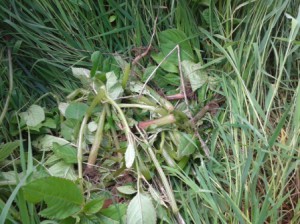
Pulled balsam. Stem broken below the bottom node (crucial!) and crushed throughout before being left to decompose
And a nice wee photo to finish this blog…….thanks for reading.

